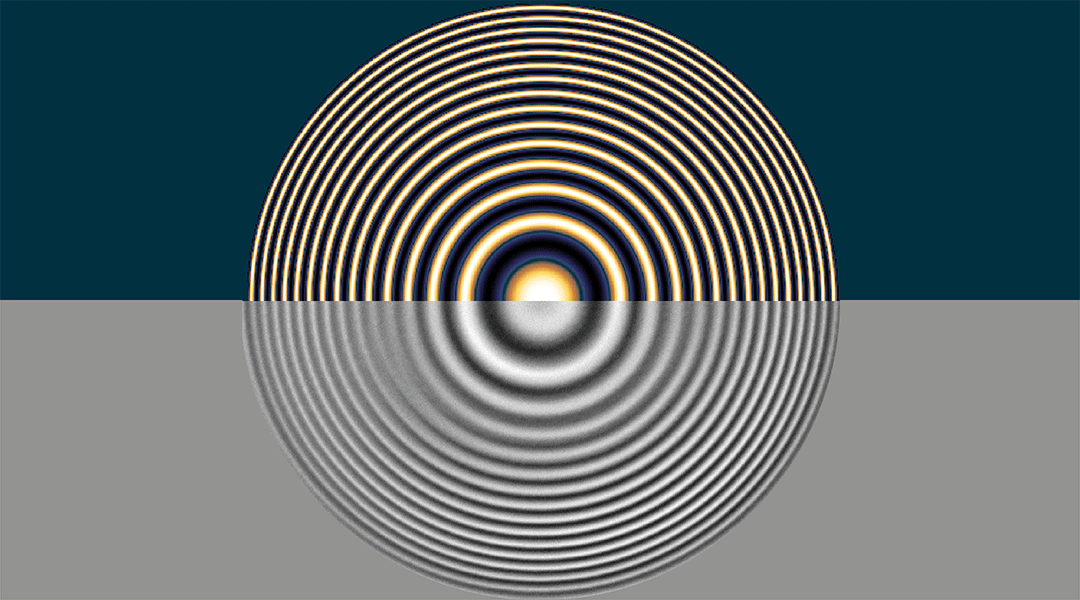It is hard to imagine a world without light, and fittingly for such an important aspect of the Universe, scientists have found a remarkably wide range of applications for electromagnetic radiation. The manipulation of light, whether visible to our eyes or not, is used in mundane everyday functions like operating TVs as well as out-of-this-world applications, like assessing the chemical properties of distant stars.
The key to these operations, no matter how complex, are optical components, such as lenses found in eye glasses, smartphones, cameras, telescopes, and a host of other technologies.
How light interacts with an optical element depends on its three-dimensional shape and the nature of the material it is made of. In some cases, the way light passes through a component, such as a lens, can be completely controlled within ultra-thin devices — the concept underlying “planar optics.”
The surface structures are sometimes implemented on the nanoscale, making their function less obvious and their fabrication more challenging than standard optical components. In addition to “flat lenses”, planar optics include polarizers, color filters, and diffraction gratings.
Manipulating light on the nanoscale
A diffraction grating is made of periodically spaced grooves that, when light shines through it, produce at a distance a line of light dots along a direction perpendicular to the grating grooves. Deceptively simple in nature, diffraction gratings represent the first example of structuring light utilizing an engineered manipulation of the phase of light — a property inherently associated with the wave nature of the light.
The creation of diffraction gratings and planar optics requires tailoring the surface morphology on the same spatial scales of light wavelength, which is currently done by lithography — the transfer of a pattern to a surface (or “substrate”) using a radiation source, such as a beam of light or electrons, and a subsequent chemical or physical selective surface engraving (or “etching”) process.
The problem with current etching methods is that once the process has been completed, the morphology of the lithographed surface is set. That results in “static” optical devices with a functionality forever defined by its manufacture and no room for tunability.
In a paper published by Laser & Photonics Reviews, researchers at the University of Naples Federico II and the Instituto Italiano di Tecnologia (IIT) document the creation of diffractive optical elements with tuneable properties that could overcome the limitations of the standard lithographic methods currently used to fabricate planar optical components.
“The result of our research is the shapeshifting diffractive optical elements, which are fully operating micro-structured surfaces directly fabricated on a photo-responsive material film,” said Stefano Oscurato, head of the research group in Naples and co-corresponding author of the paper. “The morphology of our polymeric surfaces can be changed in real-time to provide different optical functionalities on-demand.”
“Shapeshifting diffractive optical elements are planar and reconfigurable optical components, designed as designed as micro-patterned surfaces with sub-micron thickness and low weight,” added his colleague, Antonio Ambrosio, principal investigator of Vectorial Nano-Imaging, the research line at IIT in Milan and co-corresponding author of the paper.
Creating tuneable optical devices
Oscurato explained that to create their shapeshifting diffractive optical elements and to obtain unprecedented capabilities for a planar optical device, the team developed a maskless photolithography scheme to fully exploit the capabilities of the direct fabrication of dynamically structured surfaces.
Their special lithographic environment is based on computer-generated holography — a technique that allows a light wave to be recorded and later reconstructed to create a 3D image.
“Our system can project holographic light patterns with the geometry of the desired component directly onto the polymer surface, thereby directly fabricating the operating planar optical component,” Oscurato said. “By updating in time, the projected holograms, the morphology and the functionality of the device is updated accordingly, resulting in unprecedented shapeshifting diffractive elements.”
The team’s system can project grey-scale (black and white) spatially-structured intensity distributions of light onto the surface of a photo-responsive film.
They reversibly inscribe this film in a single lithographic step with the surface morphology of multiple reconfigurable diffractive elements, including gratings with variable periodicity and orientation and varifocal diffractive lenses.
Seeing double: Two major breakthroughs in optics
Ambrosio added that there are two major breakthroughs associated with the team’s method over current fabrication methods.
“First, the entire fabrication process can be completed in a standard laboratory environment without the need for specialized facilities, expensive equipment, and additional multi-step processes,” explained Ambrosio.
This dramatically reduces the resources and the costs associated with the fabrication of advanced planar optical devices while also avoiding the waste of hazardous materials typically involved in standard lithography. “Second, our shapeshifting diffractive devices are fully reprogrammable by light, which is impossible for optical components fabricated by other methods,” he continued.
“The most surprising aspect of this research is the effectiveness and the simplicity of the optical surface erasing that underlies our shape-shifting optical elements,” Oscurato said. “Although we were aware of the potential of the azobenzene-containing materials for this unique task, the large number and the quality of the erase and rewrite cycles that can actually be achieved by precisely tuning the experimental parameters was unexpected.
“This aspect makes the results of our work even more relevant for emerging technological applications that require both miniaturized and fully reprogrammable optical components.”
Potential applications include optical systems that currently must operate with different diffraction gratings and even cameras that zoom by moving one or two lenses. The system could also assist microscopes used to track moving elements, something currently done mechanically.
“Many practical applications can take advantage of the compact, lightweight, and reprogrammable nature of our shapeshifting diffractive elements,” Ambrosio said.
“The large-scale structured areas and surfaces endowed with high aspect ratio morphology at the microscale, fabricated with the holographic approach that we have developed here, could even extend the range of applications of our shape-shifting surfaces beyond photonics to biology and general surface engineering,” Oscurato added.
The authors explained that future work from the team will mainly be focused on achieving more complex optical functionalities for the team’s shape-shifting surfaces to meet the demands of emerging miniaturized optical technology. An example of this technology are holographic projectors developed and demonstrated by the same team in separate recent research.
Reference: S. L. Oscurato, et al., Shapeshifting Diffractive Optical Devices, Laser & Photonics Reviews, (2023). DOI: 10.1002/lpor.202100514

















